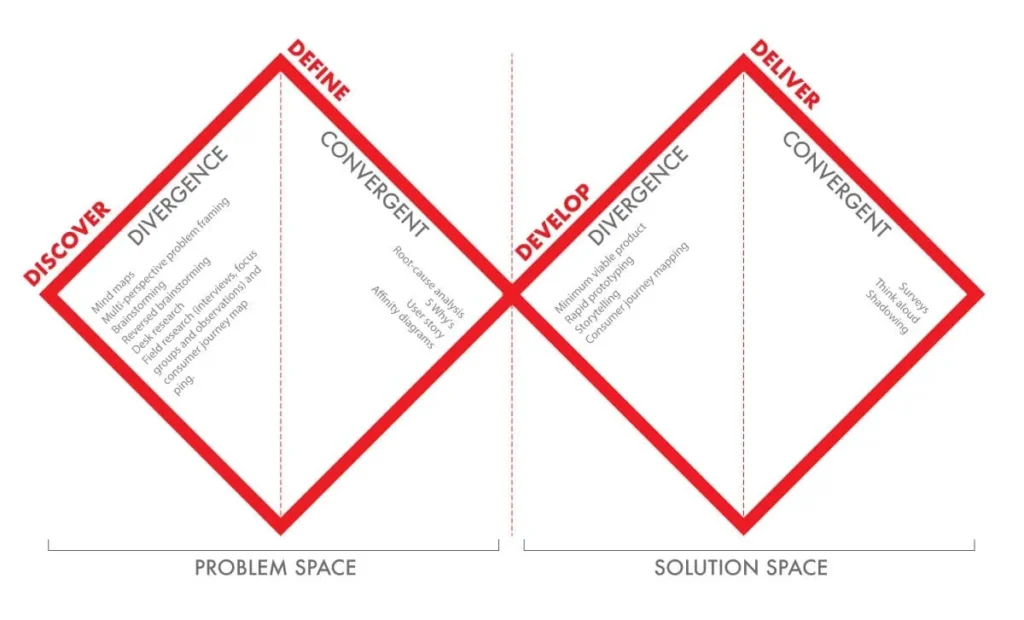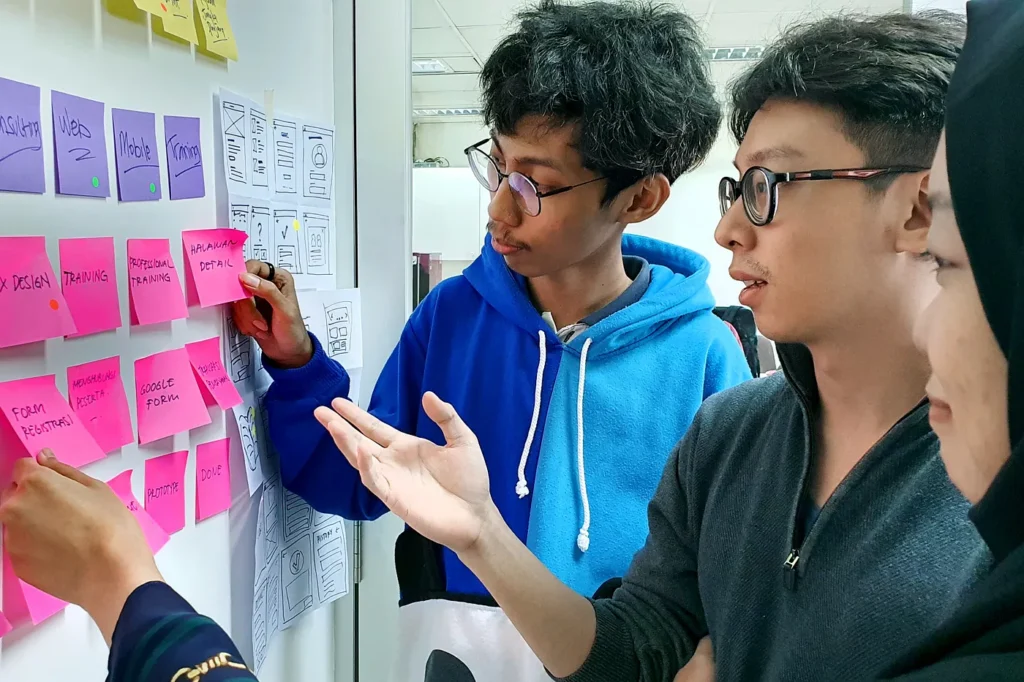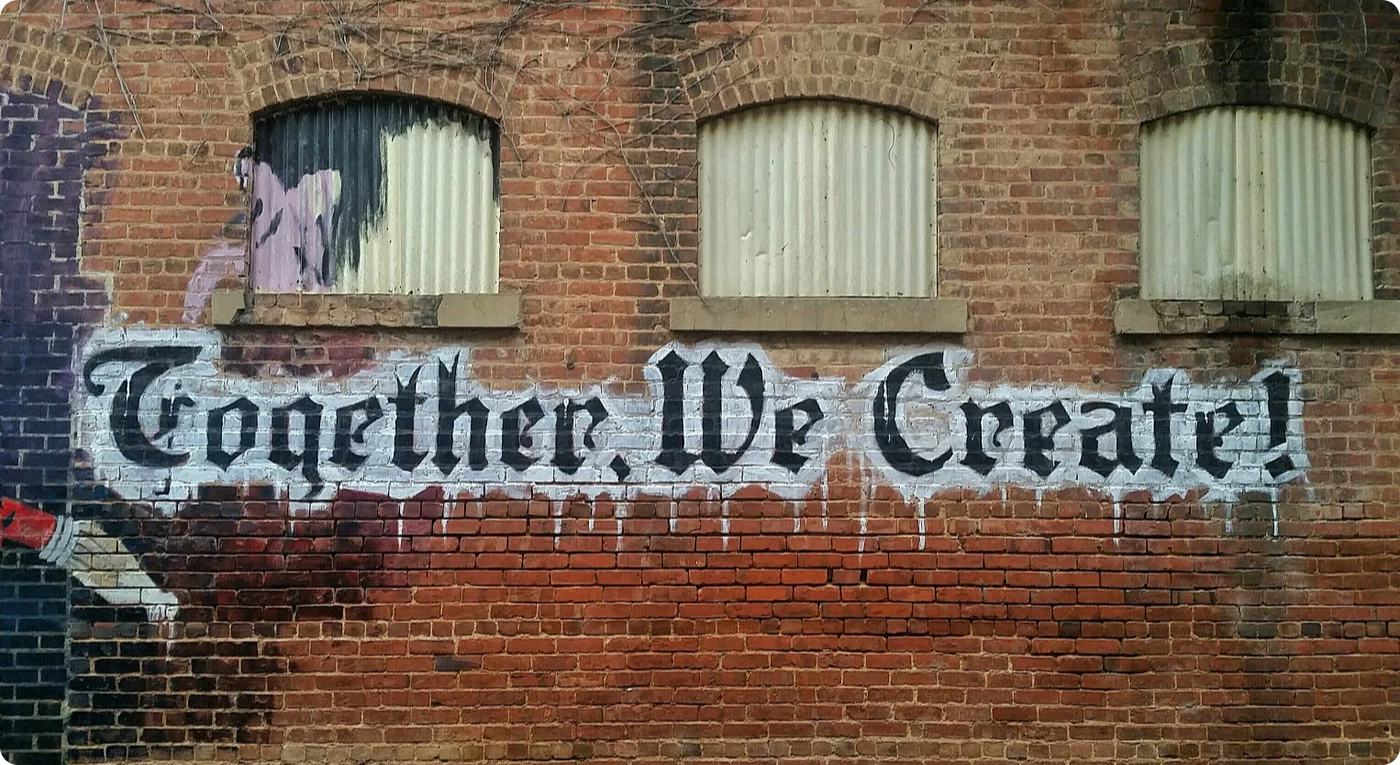Agile is a project management and software development approach that emerged in response to the rigid, inflexible waterfall model. Agile aims to provide organizations with a more responsive and effective approach to development. The Manifesto for Agile Software Development came out of a meeting between seventeen software developers in 2001.
Besides the challenges that Agile’s aimed at solving, there’s another one that organizations face: how to ensure that they are focusing on the right things that provide value? The team may learn Agile to build quickly and effectively, but if they don’t build the right solution to the right problems, they fail.
When asked how it helps organizations to build value by focusing on the right solutions, Agile sticks to its guns and explains this will be achieved through iterative and incremental development, customer collaboration, continuous delivery, and adaptability. In reality, that’s too vague. Many an Agile team build first and test second, thinking they can improve the solutions as they go, which builds up risk and may damage the customer relationship before gaps are filled and problems with the first release get fixed. For customer collaboration, Agile fails to provide tangible strategies, approaches and methodology. Teams that have not sufficiently co-created and collaborated with stakeholders including customers before will not learn how to do it by beating Agile into their heads.
This is where Design Thinking comes in. Design Thinking helps organizations identify the right, most potential challenges to solve and ideate and test solutions to address those problems. Unlike Agile, which came from the frustrations and challenges caused by waterfall project management, Design Thinking came from the frustrations and challenges of ineffective innovation.
How can we successfully blend Design Thinking and Agile? It takes more than just a desire to do so. While they share a similar mindset of collaboration and communication, each has a distinct perspective. Design Thinking wants to understand why a challenge exists and what could be under it, and how it drives human behavior. Agile wants to understand how to build a solution and what resources are required to provide value.
The Scaled Agile Framework (SAFe) is intended to guide enterprises in scaling lean and agile practices. In 2019 when SAFe 5.0 was introduced, it added mentions of Design Thinking and customer centricity. With the recent release of SAFe 6.0, the question of how to effectively integrate customer-centricity into Agile methodology remains unresolved.
Design Thinkers approach problem-solving by breaking it down into two distinct stages: the ‘problem space’ and the ‘solution space’. This involves taking time to redefine and sharpen the problem so that the solutions developed are real and validated. To represent these two spaces, a common approach is to use the ‘Double Diamond’ model. The first diamond involves zooming out and gaining a deep understanding of the customer, their context, and their needs (diverging), before formulating a clear and delineated problem statement (converging). In the second diamond, the focus shifts to the solution space where ideation and testing of different solutions take place (diverging) before selecting the best solution (converging) in the end.

The Double Diamond design thinking process (Adopted from the Design Council) Source
SAFe incorporates the principles of Design Thinking’s second diamond, the ‘solution space’, such as iterating, paper prototyping, and seeking customer feedback as quickly as possible, by merging it with the continuous exploration cycle. The continuous exploration cycle is a critical component of the SAFe methodology, beginning with the identification of business opportunities from various sources, including customer feedback, market research, or internal stakeholders. Herein lies one key difference between SAFe and Design Thinking — the latter always emphasizes the significance of understanding human behavior and customer goals as a starting point. In contrast, if the organization solely relies on input from internal stakeholders to determine viable business opportunities, it may overlook the critical customer perspective at a crucial stage of continuous exploration.
The remaining critical steps of the continuous exploration cycle involve detailed exploration and evaluation of identified business opportunities using specific criteria. Once a viable opportunity is identified, a business case is defined, and the project moves through review and approval to execution. These steps have significant overlap with the double-diamond approach of Design Thinking. However, in practice, many organizations lack historical knowledge and awareness of design principles, leading to potential risks. These risks can include business opportunities being pushed through without a thorough discovery process into the needs and challenges of customers, employees, and other end-users. Additionally, many organizations lack an understanding of effective brainstorming and prototyping methodologies, and their evaluation criteria may lack a strong focus on end-user/customer perspectives.
To successfully merge Agile and Design Thinking, we must first understand that Design Thinking is also Agile in its iterative, co-creative, and collaborative approach. Agile is not just about moving quickly, but about moving nimbly and accurately. Applying too strict of a cadence and speed to the process of trying to build the right thing right could have adverse effects. Design Thinking doesn’t fight Agile at its core, nor does it hit the brakes for the sake of it. It allows the company and team to dig deeper, reflect, take a step back, and conduct additional research to make sense of the bigger picture.
In conclusion, while Agile and Design Thinking may not have started out together, they can work together seamlessly. Organizations that can blend both approaches effectively will benefit from the flexibility, collaboration, and customer focus that they bring.
If you work in an organization that defines itself as Agile and you want to get started on Design Thinking but don’t yet have a great understanding of it at the top, a good step to try at the teams’ level can be Design Sprints. It’s known to many organizations, yet still new to others. A Design Sprint is a specific activity where a cross-functional team gets together to collaborate fast but with intention. In a Design Sprint, you get to share and understand the context and develop and test ideas. The team starts with a big problem and ends up with a clear direction, which can be used to generate the user stories and tasks to feed the backlog for Agile. Design doesn’t start and end in the Design Sprint, but running a Design Sprint can help you ensure you follow the principles of Design Thinking albeit in a condensed shape.

Photo by UX Indonesia on Unsplash








